Abstract
We have utilized the cellular differentiation gradient of the developed, youngest leaf to examine the regulation by nitrogen of levels of phosphoenolpyruvate carboxylase (PEPCase), pyruvate orthophosphate dikinase (PPDK), and ribulose 1,5-bisphosphate carboxylase in maize (Zea mays L.). The protein whose level regulated most preferentially by N availability was PEPCase, followed by PPDK, and the changes in level occurred most conspicuously at the photosynthetically maturing cells. Pulse and pulse-chase experiments to analyze photosynthetic fixation of [14C]CO2 indicate that maize leaf primarily exploited a C4-mode of photosynthetic fixation of carbon dioxide even under a selective reduction in levels of these proteins. The effects of N on the synthesis of these proteins and the accumulation of corresponding mRNAs during recovery from a deficiency were examined by pulse and pulse-chase labeling with [35S]Met and by hybridization, respectively. The rate of turnover of PPDK was substantially higher than that of the other proteins. Results also showed that the reduced accumulation of PEPCase, as well as PPDK, under N deficiency could largely be accounted for a reduced level of synthesis of protein with a concomitant reduction in level of their mRNAs. This indicates that the N-dependent selective accumulation of these enzymes is primarily a consequence of level of its mRNAs.
Full text
PDF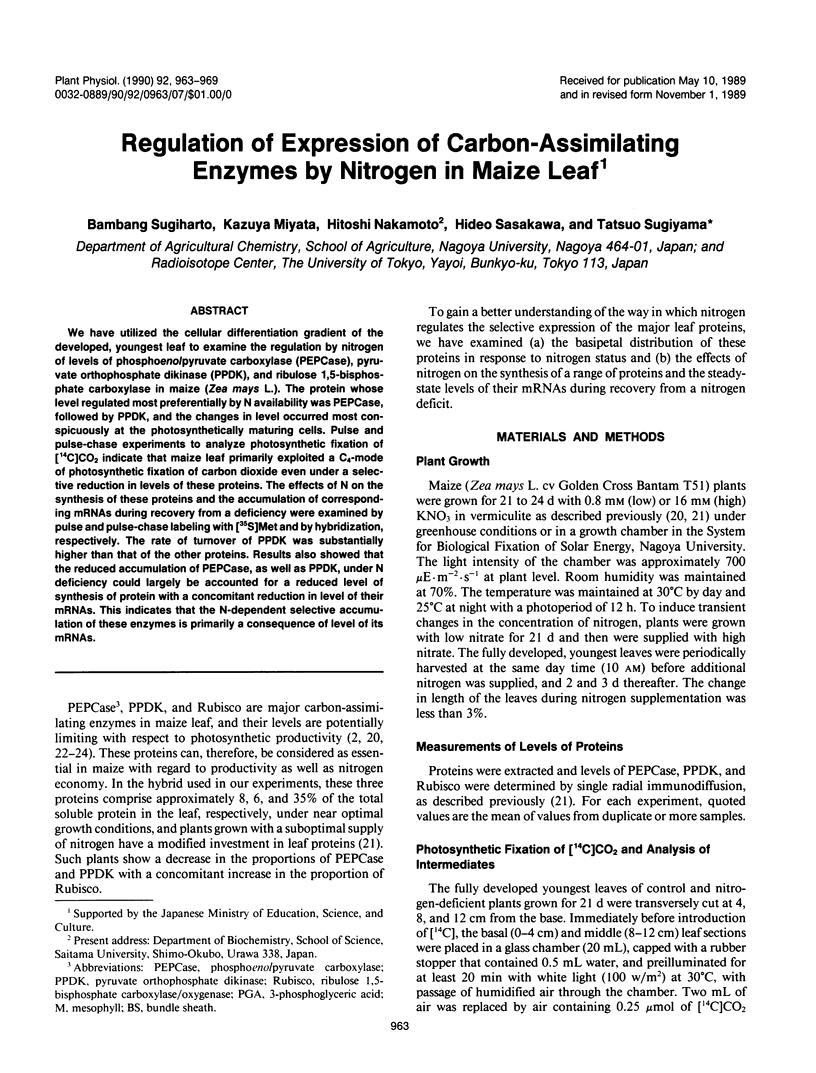
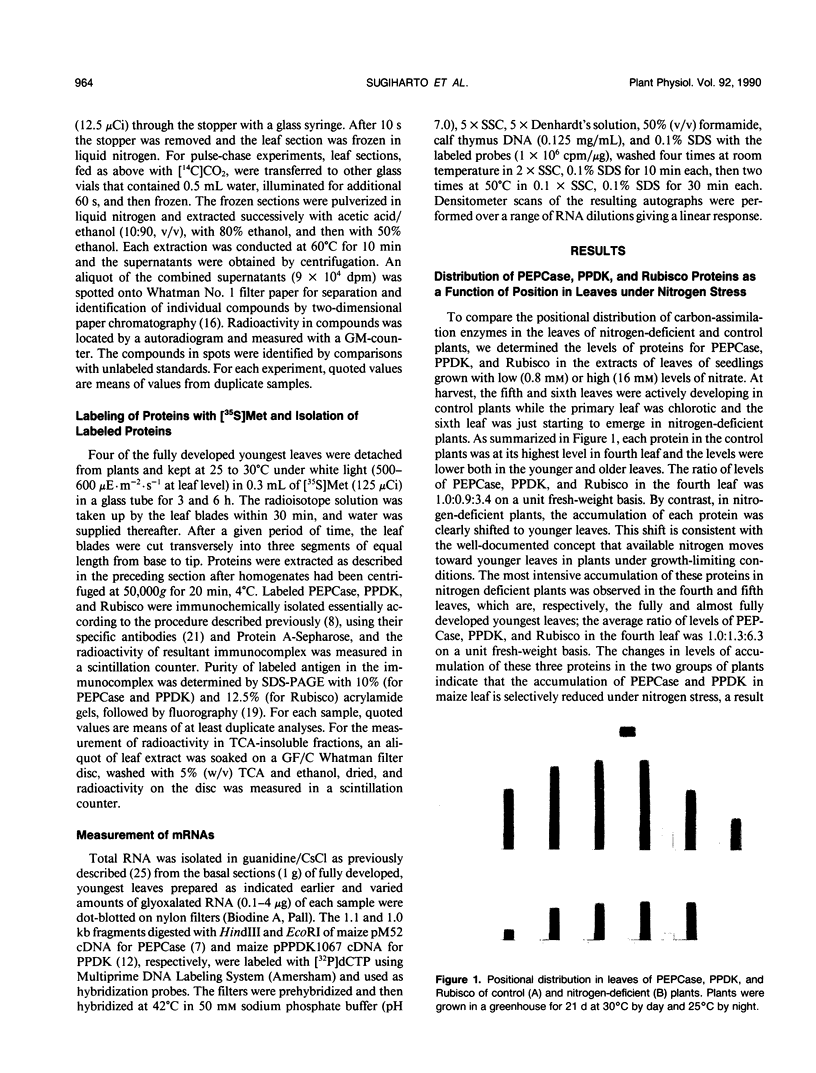
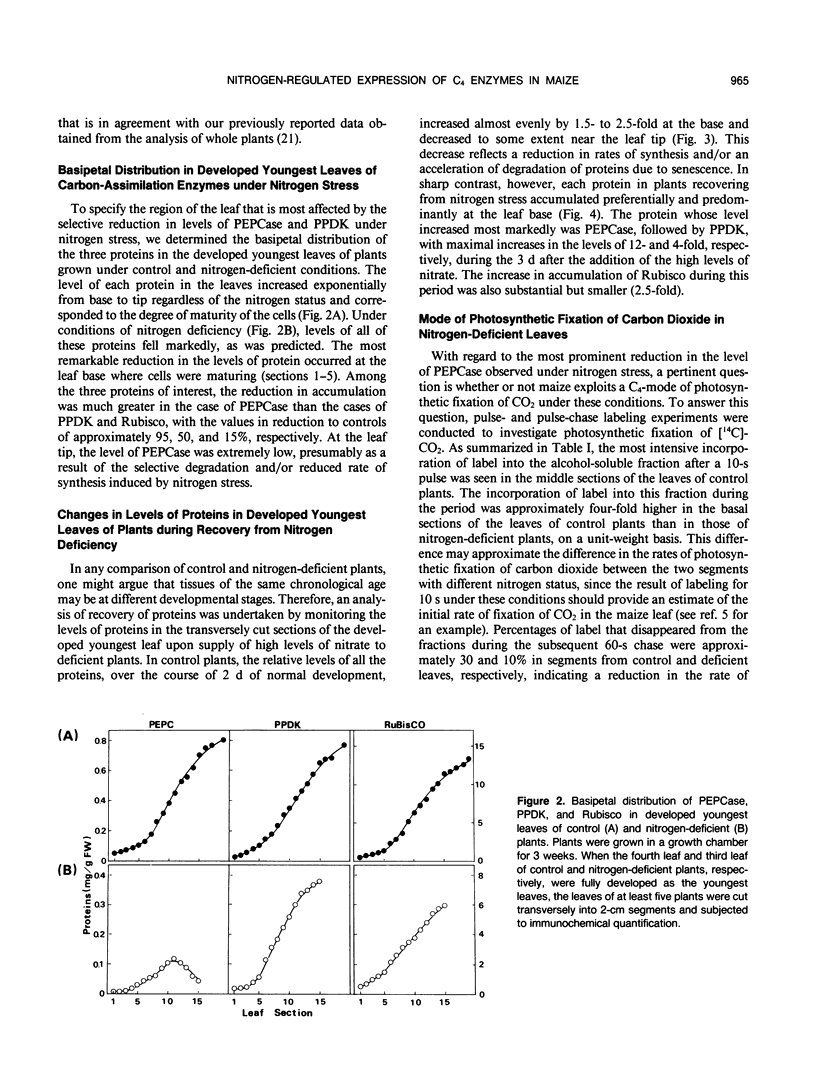
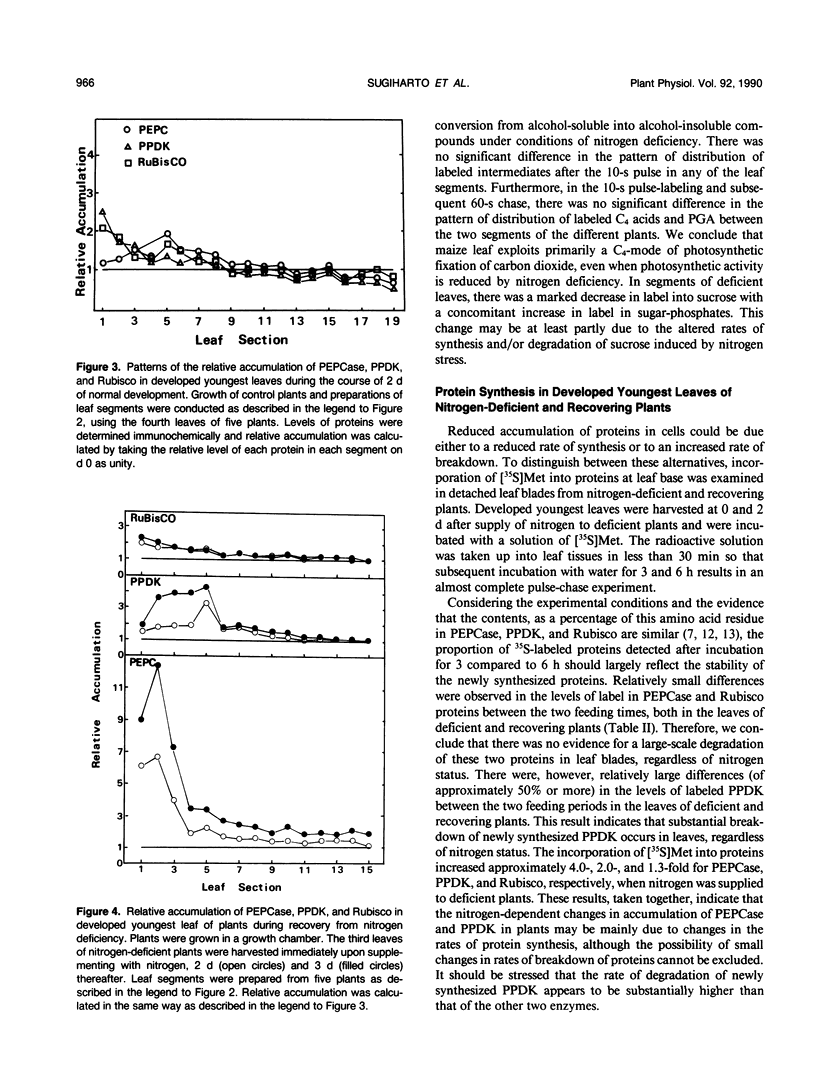
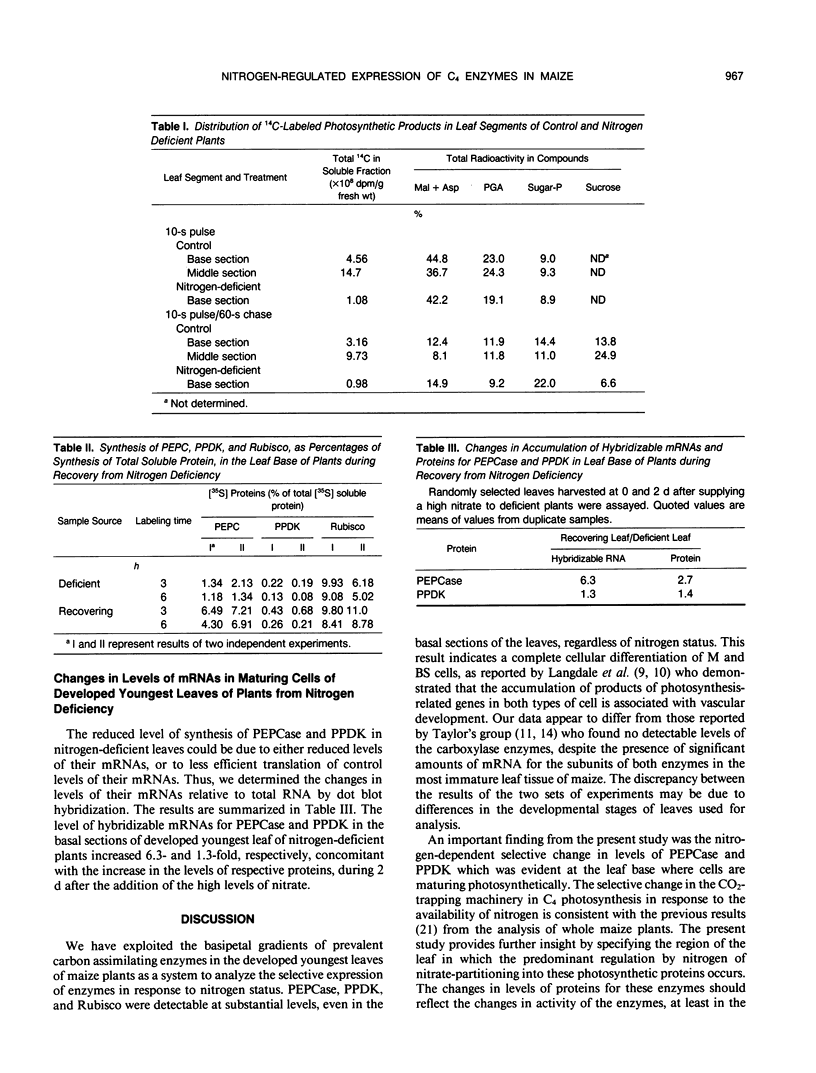
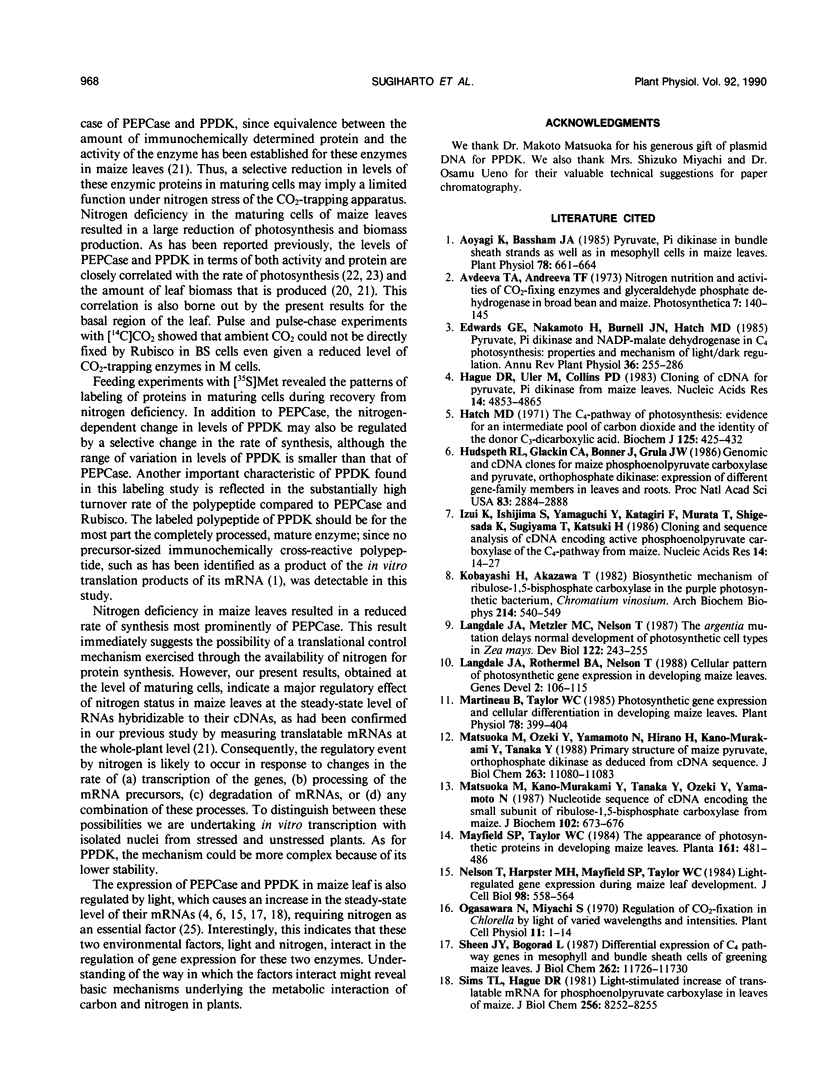
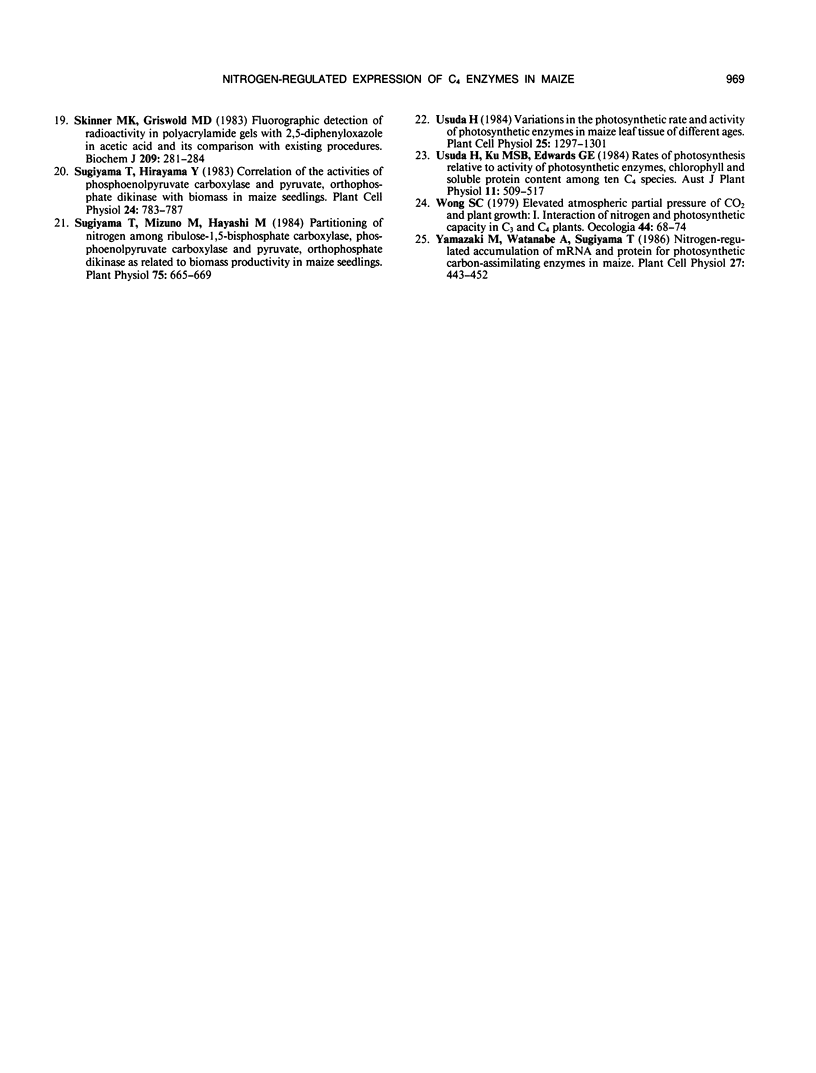
Images in this article
Selected References
These references are in PubMed. This may not be the complete list of references from this article.
- Aoyagi K., Nakamoto H. Pyruvate, pi dikinase in bundle sheath strands as well as in mesophyll cells in maize leaves. Plant Physiol. 1985 Jul;78(3):661–664. doi: 10.1104/pp.78.3.661. [DOI] [PMC free article] [PubMed] [Google Scholar]
- Hague D. R., Uhler M., Collins P. D. Cloning of cDNA for pyruvate, Pi dikinase from maize leaves. Nucleic Acids Res. 1983 Jul 25;11(14):4853–4865. doi: 10.1093/nar/11.14.4853. [DOI] [PMC free article] [PubMed] [Google Scholar]
- Hatch M. D. The C 4 -pathway of photosynthesis. Evidence for an intermediate pool of carbon dioxide and the identity of the donor C 4 -dicarboxylic acid. Biochem J. 1971 Nov;125(2):425–432. doi: 10.1042/bj1250425. [DOI] [PMC free article] [PubMed] [Google Scholar]
- Kobayashi H., Akazawa T. Biosynthetic mechanism of ribulose-1,5-bisphosphate carboxylase in the purple photosynthetic bacterium, Chromatium vinosum. II. Biosynthesis of constituent subunits. Arch Biochem Biophys. 1982 Apr 1;214(2):540–549. doi: 10.1016/0003-9861(82)90058-3. [DOI] [PubMed] [Google Scholar]
- Langdale J. A., Metzler M. C., Nelson T. The argentia mutation delays normal development of photosynthetic cell-types in Zea mays. Dev Biol. 1987 Jul;122(1):243–255. doi: 10.1016/0012-1606(87)90349-6. [DOI] [PubMed] [Google Scholar]
- Langdale J. A., Rothermel B. A., Nelson T. Cellular pattern of photosynthetic gene expression in developing maize leaves. Genes Dev. 1988 Jan;2(1):106–115. doi: 10.1101/gad.2.1.106. [DOI] [PubMed] [Google Scholar]
- Martineau B., Taylor W. C. Photosynthetic gene expression and cellular differentiation in developing maize leaves. Plant Physiol. 1985 Jun;78(2):399–404. doi: 10.1104/pp.78.2.399. [DOI] [PMC free article] [PubMed] [Google Scholar]
- Matsuoka M., Kano-Murakami Y., Tanaka Y., Ozeki Y., Yamamoto N. Nucleotide sequence of cDNA encoding the small subunit of ribulose-1,5-bisphosphate carboxylase from maize. J Biochem. 1987 Oct;102(4):673–676. doi: 10.1093/oxfordjournals.jbchem.a122103. [DOI] [PubMed] [Google Scholar]
- Matsuoka M., Ozeki Y., Yamamoto N., Hirano H., Kano-Murakami Y., Tanaka Y. Primary structure of maize pyruvate, orthophosphate dikinase as deduced from cDNA sequence. J Biol Chem. 1988 Aug 15;263(23):11080–11083. [PubMed] [Google Scholar]
- Nelson T., Harpster M. H., Mayfield S. P., Taylor W. C. Light-regulated gene expression during maize leaf development. J Cell Biol. 1984 Feb;98(2):558–564. doi: 10.1083/jcb.98.2.558. [DOI] [PMC free article] [PubMed] [Google Scholar]
- Sheen J. Y., Bogorad L. Differential expression of C4 pathway genes in mesophyll and bundle sheath cells of greening maize leaves. J Biol Chem. 1987 Aug 25;262(24):11726–11730. [PubMed] [Google Scholar]
- Sims T. L., Hague D. R. Light-stimulated increase of translatable mRNA for phosphoenolpyruvate carboxylase in leaves of maize. J Biol Chem. 1981 Aug 25;256(16):8252–8255. [PubMed] [Google Scholar]
- Skinner M. K., Griswold M. D. Fluorographic detection of radioactivity in polyacrylamide gels with 2,5-diphenyloxazole in acetic acid and its comparison with existing procedures. Biochem J. 1983 Jan 1;209(1):281–284. doi: 10.1042/bj2090281. [DOI] [PMC free article] [PubMed] [Google Scholar]
- Sugiyama T., Mizuno M., Hayashi M. Partitioning of Nitrogen among Ribulose-1,5-bisphosphate Carboxylase/Oxygenase, Phosphoenolpyruvate Carboxylase, and Pyruvate Orthophosphate Dikinase as Related to Biomass Productivity in Maize Seedlings. Plant Physiol. 1984 Jul;75(3):665–669. doi: 10.1104/pp.75.3.665. [DOI] [PMC free article] [PubMed] [Google Scholar]



